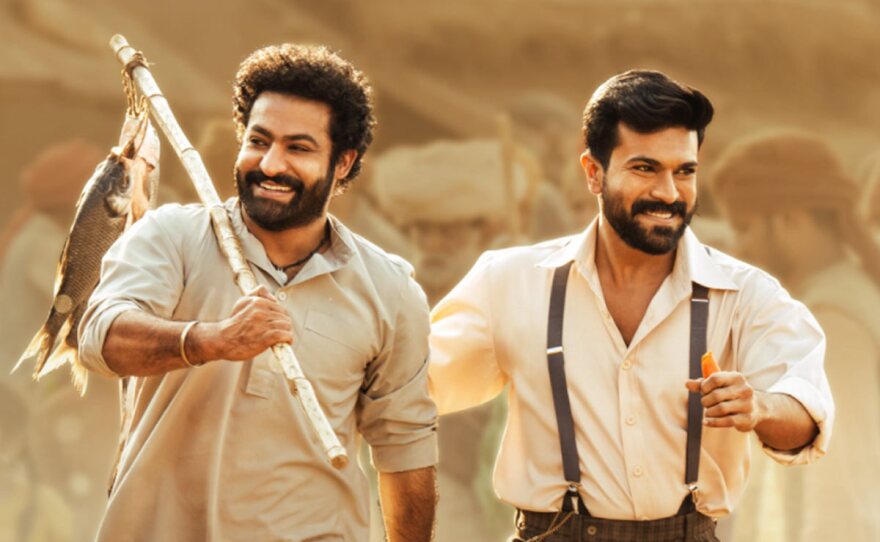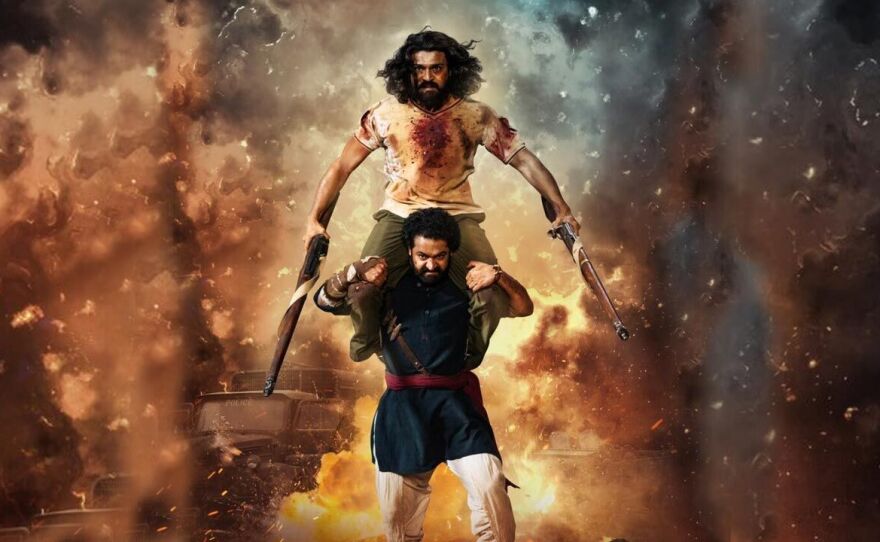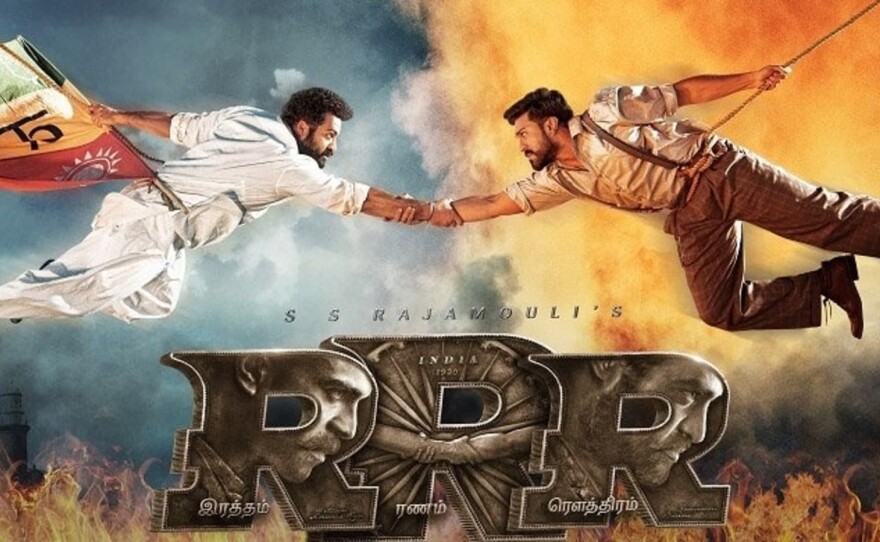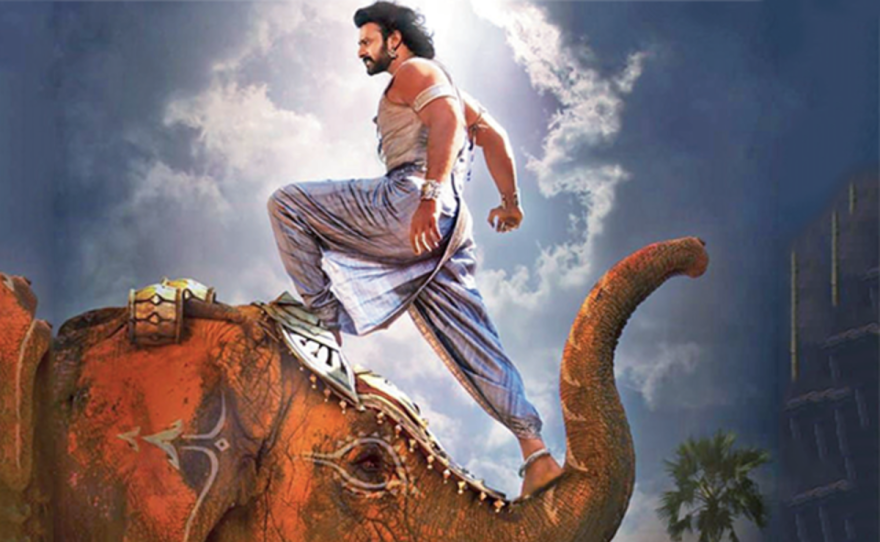"RRR" is a phenomenon in its native India, but now it is also winning over audiences around the globe and especially in the U.S.
India consistently produces about twice as many films as the U.S. and American audiences are starting to embrace these films thanks to streaming services such as Netflix and Prime that carry hundreds of titles.

Back in May, the film "RRR" was in the top ten most watched Netflix movies and now it is the most-watched non-English language film on the streaming service. (NOTE: The Netflix version is in Hindi and not its native Telugu.) This has stirred industry talk that the film might draw some Oscar love next year. It’s been two decades since India has had a film nominated for a Best Foreign Language Film by the Academy (the last one was "Lagaan" in 2001).
"RRR" is India’s most expensive movie to date and one of its highest grossing. It is inspired by a pair of historical figures but delivers more fantasy than facts as it serves up a bromance between two men (N.T. Rama Rao Jr. and Ram Charan Teja, the descendants of Indian acting dynasties) who seem to be fighting on opposing sides. One is a villager rebelling against his British colonizers while the other is working for them. It’s a three-hour saga — not an unusual length for an Indian film — featuring ridiculously gorgeous stars, crazy action set pieces, an evil empire, melodrama to swoon over and, of course, musical numbers that are absolutely irresistible.
Here is the dance-off scene that has won audiences over.
On a certain level, it is easy to see why this film has been such an amazing crossover success. S.S. Rajamouli knows how to work an audience. He successfully did it in "Baahubali: The Beginning" and "The Conclusion." He knows how to make everything feel epic in a way that plays off of Bollywood traditions, mixes that with Indian mythology and delivers everything with an affectionate wink that says, "Yes, I know I am dialing this to 11, no wait 1000."
I will just cite one example: there is a torture scene where the guy should be dead, but he breaks out into song and by the next scene is fully recovered.

"RRR" is just so relentlessly and joyously over the top that you can’t help but get sucked in.
While American audiences may be more familiar with Bollywood, "RRR" is a product of Tollywood. Yazdi Pithavala, of Moviewallas podcast and a frequent Cinema Junkie guest, explains the distinction.
"Indian cinema is frequently associated with Bollywood films made in Hindi," Pithavala said. "Bollywood refers to films made in studios in Bombay (now Mumbai). However, from the very beginning, India has had a rich history of local cinema made in other parts of the country. More recently, films made in South India have been gaining national attention, films made in the regional South Indian language of Telugu are called Tollywood films, and 'RRR' is a great example of that."
"RRR" is a great example of populist entertainment. But I always find that pop culture tells us a lot about what is going on in a country. Actors like John Wayne and on up through Clint Eastwood, Chuck Norris and Sylvester Stallone have made fun and popular action films but those also say something about a particular kind of American individualism and testosterone. You can just have fun watching but you can also see how those films are meant to stir a certain kind of patriotism or way of thinking.
"RRR" gives us people fighting against an evil British empire, so of course, we cheer them on, but there is also a rousing, unquestioning nationalism at play. India is as prone to tropes and stereotypes as Hollywood, but American audiences may not recognize that as readily when it comes from another culture.

"The reason the film has raised more than a few eyebrows is the naked abandon with which it embraces a particular brand of hollow patriotism. Which then goes further and gleefully tips into nationalist fervor," Pithavala said. "The current reigning political party in India has long been accused of weaponizing nationalist rhetoric to exalt Hinduism, often to the detriment of people of other faiths living in India. And when the last half hour of this film sees its heroes actually take on what are unmistakable incarnations of the Hindu gods, Rama and Bheema, you've got to scratch your head about this film’s agenda. Is this thinly veiled nationalistic propaganda or innocent entertainment? You get to decide when you watch it."
"RRR" is currently streaming on Netflix and will provide sensory overload. Check it out but also look to some of the films recommended below to get a fuller sense of recent Indian cinema.
NOTE: Beyond Fest and American Cinematheque have just added a series of screenings at the end of September highlighting the works of S.S. Rajamouli with the filmmaker in person. There will be a rare IMAX-presentation of "RRR." Plus a program called "From Tollywood to Hollywood: The Spectacle & Majesty of S.S. Rajamouli," which features a nine-hour marathon of his "Eega." "Baahubali: The Beginning" and "The Conclusion." This is epic!
And check out Cinema Junkie's two-part podcast "Hooray for Bollywood" (see below) featuring Pithavala and his Moviewallas' colleagues Rashmi Gandhi and Joseph Djan.
Beth's recommendations for recent Indian films:
- Mumbai noir by Ram Gopal Varma, "Company" and "Shiva"
- "Baahubal: The Beginning," and even better, "The Conclusion"
- "Jodhaa Akbar"

Yazdi's recommendations for recent Indian films:
- Historical epics: "Padmavat," "Bajirao Mastani, "Jodhaa Akbar"
- For genuinely well-written, finely constructed heartwarmers: "Kapoor and Sons," "Badhaai Ho," "Yeh Jawaani Hai Deewani"
- Achingly tragic films: "Lootera," "Parineeta"
- Sheer sweet, giddy entertainment: "Jab We Met," "Dil Dhadakne Do"
- Smaller films: "Margarita With A Straw," "Cobalt Blue," "Wake Up Sid," "Newton"






